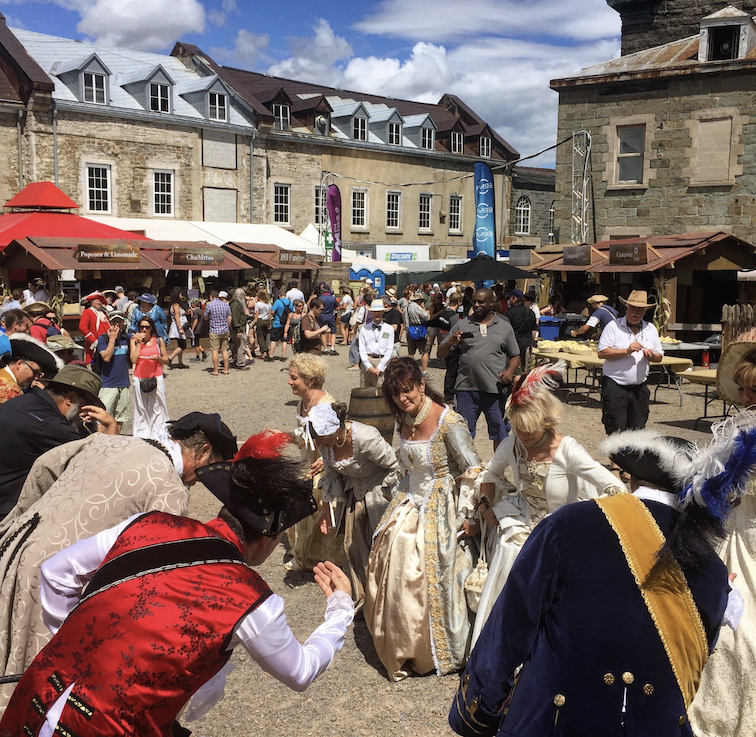
The New France Festival (Aug. 6-9, 2026) is a must for anyone interested in history with everyone dressing in costumes for dance, local foods, military marching, gun firing, lessons in fencing, tankards of ale and turkey legs, and all things French. Photo by Rich Grant
By Rich Grant
“The only thing that makes sense is for Canada to become our cherished Fifty First State.” President Donald Trump, May 4, 2025.
Donald Trump is not the first United States president to suggest that Canada join the U.S. George Washington, John Adams, Thomas Jefferson and James Madison all thought Canada should be a state; Washington and Madison actually ordered military invasions of Canada to make that happen.
They were not alone in their quest to control Canada. The indigenous people of Canada fought to keep their homelands. The French wanted Canada. So did the English. And later the Americans twice tried to push North of Lakes Erie, Ontario, and the St. Lawrence River.
As a result, Quebec City – the gateway to Canada on the St. Lawrence River – became the Gibraltar of America – the most fortified walled city in North America. And the most beautiful. Today, Old Quebec is a French-speaking, European-looking town with a maze of cobblestone streets lined with colorful umbrellas and outdoor cafes, century-old stone buildings with bright red roofs and overflowing flower boxes, inviting shops selling local cheeses and maple syrup, and everywhere, cannons. There are 4.6 kilometers of preserved cannon-studded stone walls circling the old town, which can only be breached by entering through four medieval-looking gates. Once inside the walls, you are in an UNESCO World Heritage Site – a fairy tale 18th Century European town with the fantastic castle-like Chateau Frontenac – the most photographed hotel in the world – hovering over the central square.
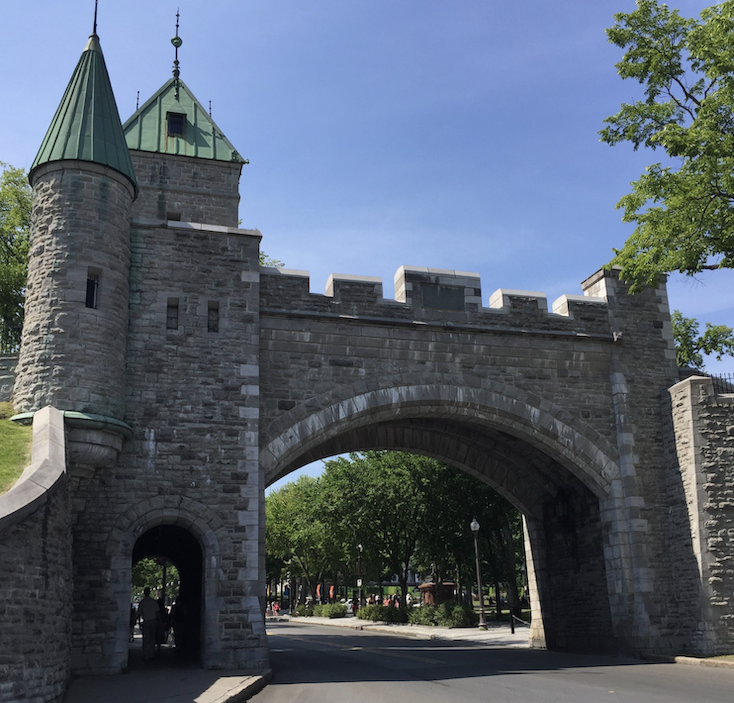
Vieux Quebec can only be entered through four gates that pierce the outer walls. Photo by Rich Grant
In Old Quebec, every conversation begins with “Bonjour!” Horse-drawn carriages clip-clop up the street, waiters carrying huge platters of beer and food shuffle from table to table and everywhere there is color, from parks filled with flower beds to historic flags flapping in the breeze to gaily painted wood shutters and doors.
It is a far different place than the nearly abandoned and bombed out ruin of a smoldering town the British marched into after battle on September 13, 1759, or the cold, snow-swept fortress that Benedict Arnold and American troops attacked on December 31, 1775. And yet, much of Quebec remains the same In Old Quebec, you are never more than a step or two from its 400-year-old history.
As we approach the year-end 250th anniversary of the American attack on Quebec, there has never been a better time to plan a visit to the marvelous multicultural concoction that is Vieux Quebec. In winter, Quebec is renowned for its Winter Carnival (February 6-15, 2026), a celebration of snow sports featuring a majestic ice palace and carved ice sculptures. For most visitors, Quebec is best visited between spring and fall, when advance planning is necessary to stay in or near the historic walled portions of the town. Here’s how Quebec became the city it is, and where to learn its history.
The Plains of Abraham
Frenchman Jacques Cartier started it all by sailing up the St. Lawrence River in 1534 and claiming all he saw (basically all of eastern Canada) to be New France. No one seemed impressed. It was 74 years before anyone came again. This time, in 1608, Samuel de Champlain sailed up the St. Lawrence and for defensive purposes, at the river’s narrowest spot, protected by a sheer cliff, he founded Quebec City. For 150 years, the French town, surrounded by stone walls, prospered and did well with fur and lumber trade.
But then Quebec got caught up in the first real world war, a global conflict between France and England that extended to America, where it was called the French & Indian War. In 1759, a British fleet arrived at Quebec and lobbed 36,000 heavy cannonballs and 6,000 bombs into the town, destroying much of it and setting the rest on fire.
But still the French held out. In a last-ditch attempt, British General James Wolfe led 4,500 crack troops on a daring night raid, climbing the “unclimbable” cliffs protecting Quebec to gain the open fields outside the city walls. French General Marquis de Montcalm felt he must push the British back into the river, and in a military move still debated, he led 4,500 poorly trained French militia and regulars outside the walls to attack. It took just 15 minutes of battle to end the empire of New France. The British held their fire until the French were 40 yards away, then delivered two devastating blasts of musketry. The first French line of troops disintegrated into dead and wounded. The rest were routed, the British took the city and that’s why Queen Elizabeth is currently on the $20 Canadian bill.
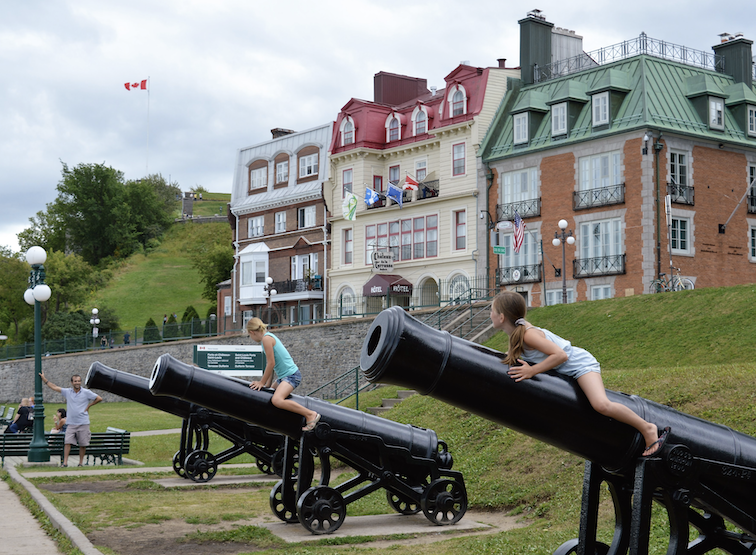
The walls around Quebec are lined with cannons — many of which still point towards the United States, and all of them now have dual purposes. Photo by Rich Grant
The battlefield is a far cry from the one once covered with blood, bodies, and smoke. Today, the area is a huge, beautiful park that serves as the lungs of Quebec with bike trails, picnic spots, and, of course, cannons. The Plains of Abraham Museum offers “Battles 1759-1760,” a multimedia exhibition where cannon balls appear to come flying at you off the screen and chilling first-person accounts tell the story of the tragedy inflicted on soldiers and civilians.
The City Walls & Artillery Park
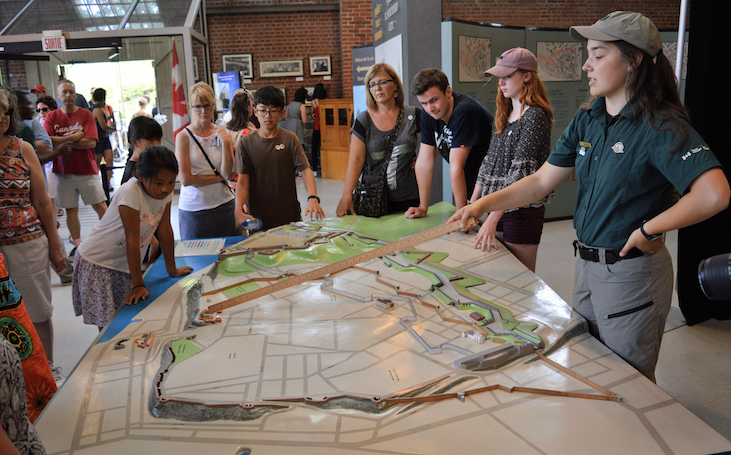
The national park protecting the walls has exhibits that explain the history of the fortifications and how large they were. Photo by Rich Grant
No trip to Quebec is complete without walking the walls, and the best way is with a National Park walking tour. For some reason, all the guides of military sites seem to be young millennial girls with limited interest in the fighting, but charming accents and attitudes. No worries, there was never any fighting on the walls anyway. Our guide began by asking, “How many of you are Americans?” Half the group tentatively raised our hands. “Well, these walls were built to keep you out. And until today, they worked.” The joke is not lost on contemporary Americans who realize that in the 19th century, we were the enemy and Canadians were forced to go to great lengths building walls to keep Americans out. Unfortunately, history may be repeating itself. Somewhat. Most Canadians appreciate American visitors and would never be so rude as to bring up current politics. Still, it doesn’t hurt if you wear a T-shirt that says, “We hate him too!”
The four kilometers of walls surrounding Quebec are indeed an incredible feat, comparable to any of the walled cities in Europe. And the tour by the French Canadian guides is delightful and filled with fun. You’ll forget the dates of construction, but will always remember a sweet French accent saying, “So as you can see, the walls were built on the side of the city of which the cliff was not.”
Fed up with threats from America, in the 19th Century, the now British Canadians finally finished the Citadel, an impregnable “fort within a fort” — the “Gibraltar of America” — a place that was so powerful, it was never attacked. Today, the star-shaped Vauban fortifications offer a look at 300 years of military architecture.
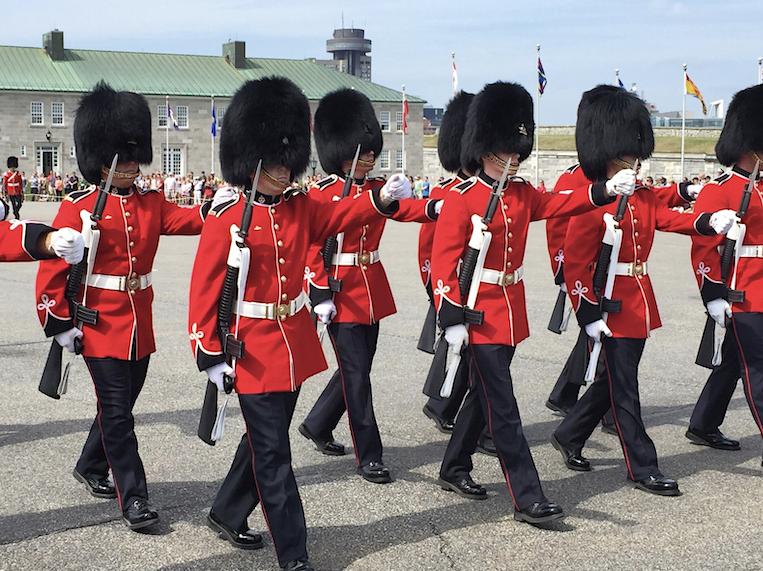
The changing of the guard in the Citadel de Quebec is similar to the one in London, with one major difference. The regiment is French so all orders have to be given in French. Even Queen Elizabeth when visiting had to give orders in French. Photo by Rich Grant
The highlight of the visit here in summer is the daily changing of the guard. This is an active fort and the Royal 22nd Regiment is still stationed here. The colorful, albeit somewhat lengthy, changing of the guard ceremony involves dozens of troops marching while a regimental band plays and officers issue orders.
Look for troops who seem to be shorter than the others. They are women. Some 10 percent of the regiment are women, and women participate in the changing of the guard, even as officers. This is the only French regiment in Canada, and all orders to it must be given in French. Even King Charles and, before him, his mother Queen Elizabeth had to deliver orders in French.
The Queen gave the regiment a Persian goat in 1955 to act as a mascot, and now the third generation of the goat, always named Batisse, is at every changing of the guard ceremony, posing for photos. Don’t tell anyone, but there are actually three goats named Batisse. The guides seem quite jealous of the goats. “Each goat has to work only once every three days and the rest of the time they get to hang out with their girlfriends,” our guide said.
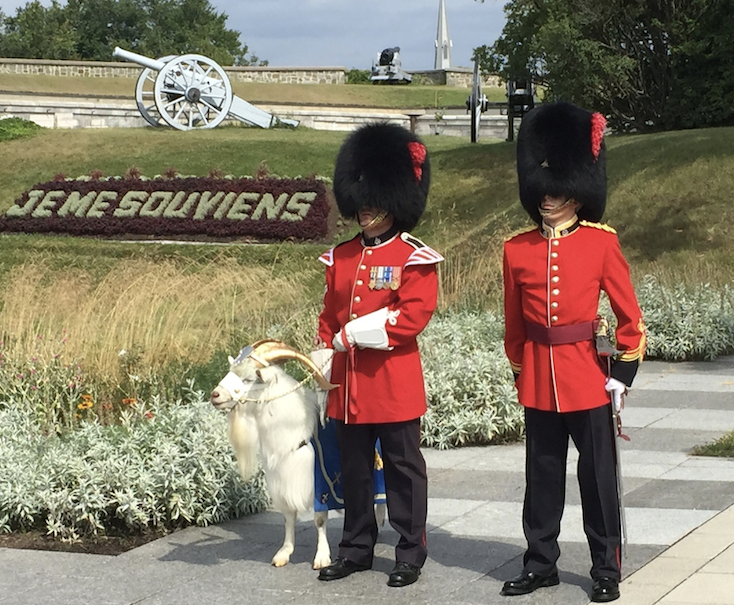
in 1955, Queen Elizabeth gave Quebec’s Royal 22nd Regiment a Persian goat named Batisse. Seven generations later, there still is a goat named Batisse at every changing of the guards ceremony. Photo by Rich Grant
The views from the Citadel over Quebec are the best in the city, but you’ll have to take them fast. This is a working fort, and they don’t allow lingering.
The streets of old town
There are two Quebec cities, the upper and lower town (the one on top of the cliff and the one below it, which has been greatly increased in modern times with landfill). Both are fantastic. The upper town has a maze of streets, some closed to traffic, and a beautiful wood terrace lined with gardens and cannons overlooking the St. Lawrence River. With the towering Chateau Frontenac as a beacon, it’s impossible to get lost, so the town is best explored by wandering aimlessly, ducking down this alley or taking that street to poke into shops selling maple syrup, Canadian art, Native American handcrafts, fur hats, and wool fashions. Every third building is a colorful café or bar. Rue Saint-Jean is a fun place at night, offering folk singers who do a mixture of songs in French and English. Paillard bakery is a favorite lunch stop with locals for sandwiches and pizza.
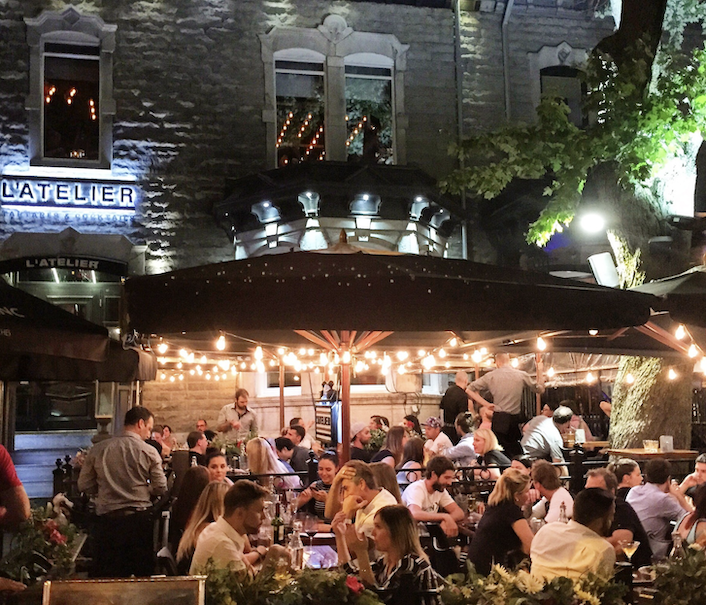
Just outside the walls of Quebec, not far from the Plains of Abraham where the French were defeated in 1759, there are long streets filled with one cafe and bar after another. Photo by Rich Grant
Craft beer has found Quebec with more than 30 microbreweries in and around Quebec city. Just off Rue Saint-Louis is Rue du Tresor, a pedestrian street filled with local artists, portraitists and caricaturists showing off their works. Rue Saint-Jean is closed to traffic on summer evenings and is lined with trendy cafes.
Place Royal & La Petit Champlain
The lower town is the oldest area of Quebec, especially at Place Royal, the oldest and most unchanged square of the city, which looks much like it would have when Benedict Arnold and the American army attacked here in 1775. When the American Revolution began at Lexington and Concord, rebel leaders like Ben Franklin assumed that Canada would join and become the 14th colony. When they didn’t, George Washington ordered a military invasion of Canada to convince them. The invaders quickly took Montreal and every other town in Canada except Quebec. No one expected much of a fight from Quebec but fight they did.
The Americans planned a daring two-prong night attack in a blinding snowstorm on Dec. 31, 1775. The American leader, General Richard Montgomery, was killed in the first cannon blast and his men ran away. Leading the other attack, Benedict Arnold was wounded in the leg and carried from the field. Daniel Morgan, who would later become one of America’s greatest generals, led the remaining men into the walled town and was inches from capturing all of Canada. But at a crucial moment, he decided to follow orders and wait for Montgomery before entering the Upper Town. It was a fatal mistake. Montgomery was already dead, and his men were in retreat. During the wait, Canadians and British surrounded Morgan, and he and 380 of his men were captured. It was the end of any serious attempt to capture the city and Canada.
Place Royal is also where, in 1608, Samuel de Champlain started the first permanent settlement in New France. The Place Royal Museum has dioramas and a 3D movie to help you visualize the history that took place here.
Quartier Petit Champlain
A bit livelier is the Quartier Petit Champlain, the incredibly picturesque portion of the lower town, where centuries-old stone buildings now house 45 shops and restaurants, many of which are terraced along the steep pedestrian path leading to the upper town. There’s a 1879 funicular connecting the upper and lower towns for those that don’t do well on hills, but the climb is not that bad and is lined with shops and restaurants, so you’ll be missing a lot if you don’t walk. The lower town specializes in handicraft boutiques selling jewelry, leather, fur, wool clothing, and decorative arts.
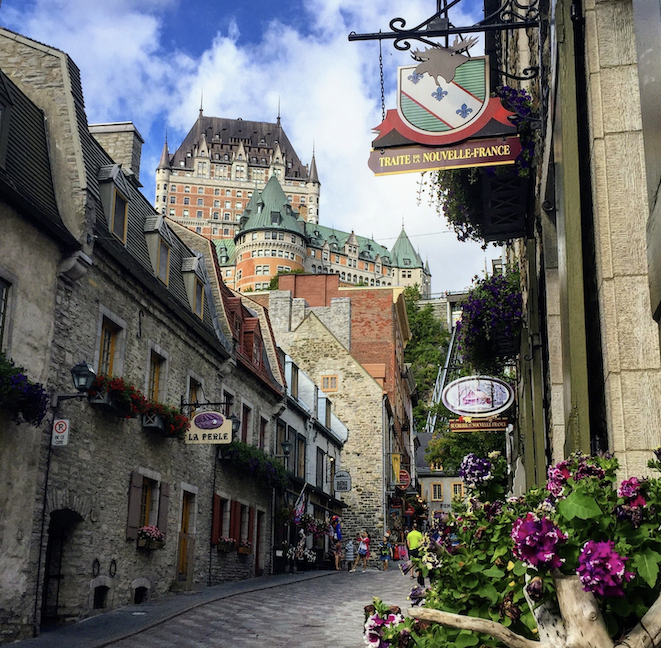
The beautiful view of the Upper Town from the Lower Town. Rising above the upper town is the Chateau Frontenac. Photo by Rich Grant
Both towns are home to incredibly talented street buskers who perform on stages sanctioned by the city. From acrobats jumping through fire rings to Broadway-quality singers belting out tunes from Phantom of the Opera, Quebec City is like a three-ring circus, and you are never far from free top-quality entertainment. Visually, the city is stunning, with modern murals, outdoor sculptures and artworks blending with 18th-century stone architecture and cobblestones (don’t even attempt to walk in Quebec in anything but flat, comfortable shoes!).
There are museums in Quebec covering everything from art to artillery, with historic houses, century-old churches, monuments, and an aquarium thrown in. Of interest in understanding how New France evolved into Vieux Quebec is the Museum of Civilization, an organization dedicated to preserving the history and culture of the various people who have called Quebec home. The modern Museum of Civilization is the city’s most popular museum, featuring a diverse range of rotating exhibitions. The permanent exhibit, “In Other Words, Quebec,” features artifacts from Cartier to Champlain, battle dioramas, and exhibits on the First Peoples of America.
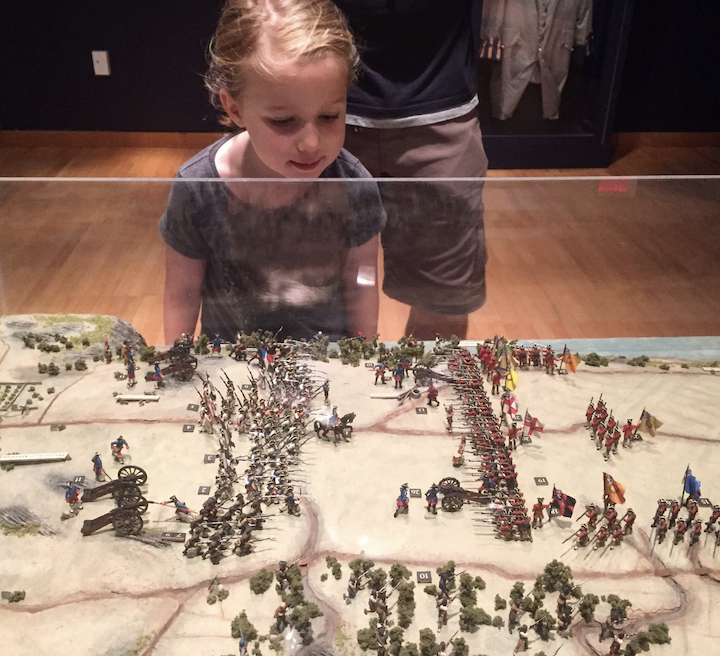
Dioramas in the Museum of Civilization show the famous 1759 battle for Quebec. Photo by Rich Grant
For the right person, this could be a unique and once-in-a-lifetime experience. The Hotel-Dieu de Quebec monastery was built in 1639 by the Augustinian Sisters, who made this the first hospital in North America north of Mexico. Today, it is a 65-room boutique hotel, restaurant, museum and holistic wellness center that lets you experience what it was like to stay and live in a monastery. Don’t ask about Wi-Fi – you can’t even have an electric hairdryer or shaver. The authentic rooms (or “cells” as they were called) are simple, clean and comfortable, with a sink and mirror, historic furniture, shutters and shared bath. The 32 modern rooms feature a contemporary design with private bathrooms.
But your room is just the beginning of the experience. There are packages that include workshops, lectures, concerts, meals, and daily activities, all designed to promote spirituality and holistic health in an authentic setting. This is not the place to stay if you’re going to be out closing the bars on Rue St. Jean, but for those looking for health, introspection and non-domination spirituality, look no further.
If you’re not up to that, guided tours tell the story of the Sisters and with 40,000 objects, trace the history of medicine and the first hospital in New France. There’s a bullet extractor used in the famous 1759 battle, and all sorts of horrific implements from early medicine. In keeping with the program, you must be quiet during the tour and walk softly in the historic parts of the building.
The New France Festival, Fêtes de la Nouvelle-France,
Scheduled next for Aug. 6-9, 2026, this festival is a must for anyone interested in history. It’s also a hoot. Staged in the Artillery Park, under the city walls, this is a massive celebration of all things 17th and 18th century in New France, featuring more than 400 programs and events, including a parade and fireworks. Hundreds of people dress like 18th-century soldiers, traders, common people, nobles, bar wenches, and craftsmen. You can rent costumes and join the fun, or at the very least, get a tri-corner hat, a tankard of ale and a turkey leg and enjoy the show. Soldiers guard the gates, colonial bands play, Native Americans offer chants and there are craftsmen working their 18th-century magic in a long line of booths selling leather goods, jewelry, muskets and pottery.
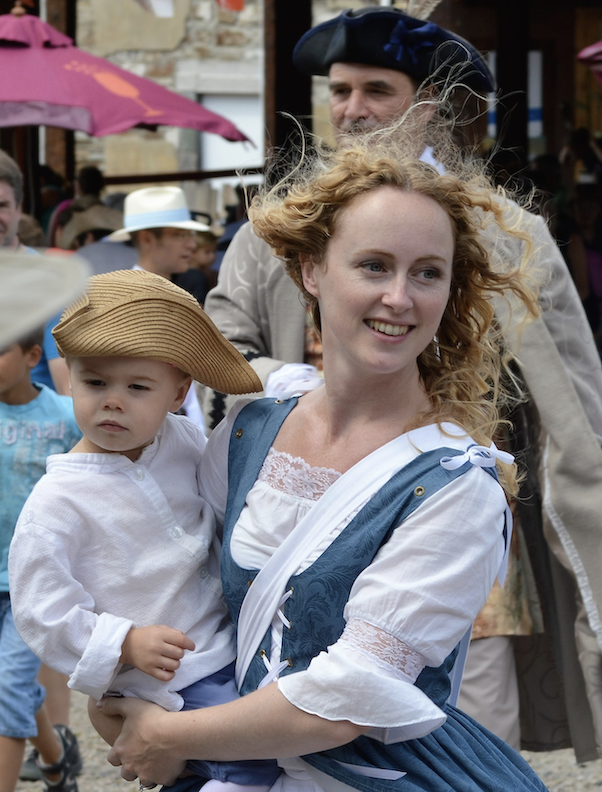
The multi-cultural, French-speaking city of Quebec loves its colonial heritage and makes the most of it in museums and events. Photo by Rich Grant
Unlike so many historical re-enactments where the participants exhibit the three “O’s” (old, overweight and odd), here the costumed crowds are young and sexy, the beer is flowing, and there’s any number of delicious local delicacies to nibble on, from lobster rolls to local cheese fondue. There are folk singers, buskers, corn-eating contests, colonial dance programs (even without a costume, you can learn the dances), military marching bands, gun firing demonstrations, and special tours of the fortifications.
There’s also a serious side with seminars and programs in English as well as French about the empire of New France. Roving costumed educators will tell you how there were only 60,000 Europeans in New France in 1759, versus 2 million people in the British colonies to the south. Although New France was overwhelmed in war, the joie de vivre of the French people has kept their culture alive, making it the focal point of this colorful festival.
Chateau Frontenac, a Fairmont Hotel
New France didn’t exist during the Middle Ages and Renaissance period, but to make up for that, New York architect Bruce Price incorporated architectural styles from both periods into his masterpiece hotel, Chateau Frontenac. Opened in 1893 (and expanded with five wings and a tower), the 611-room hotel is allegedly the most photographed hostelry in the world. Who could doubt it? It’s almost impossible to take a photo of Quebec without capturing this mystical castle in the center with its many fantastic green copper towers and turrets.
The name comes from Louis de Baude, Count of Frontenac, who was the governor of New France from 1672-1698. His coat-of-arms is on the entry arch to the hotel. Under it have passed every celebrity to visit Quebec, from Princess Grace of Monaco and Celine Dion to Paul McCartney and Leonardo DiCaprio. U.S. President Franklin D. Roosevelt and British Prime Minister Winston Churchill held two of their few World War II meetings in the hotel in August 1943 and September 1944.
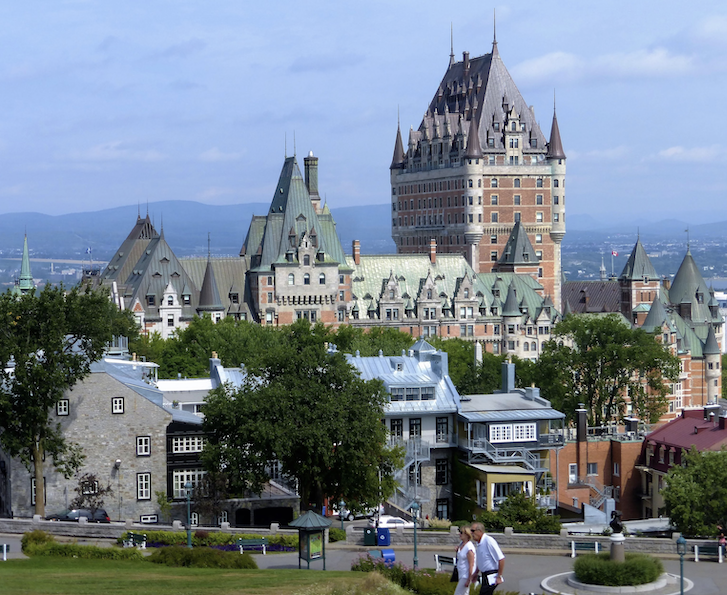
Chateau Frontenac is called the most photographed hotel in the world because you can’t stop taking pictures of it. Photo by Rich Grant
Staying at the hotel is the ultimate Quebec experience. There are 2,000 windows, 1.2 kilometers of corridors and it’s not unusual for the hotel to dish out 2,000 gourmet meals a day. While the rooms have modern amenities in keeping with being one of the finest hotels in the world, the public spaces, lobby, 1608 Bar, and the rows of hotel shops are dripping with atmosphere and history.
And then there are the views. The hotel is built atop Dufferin Terrace, which is where Champlain built Quebec’s first fort in 1620. Today, walking along the wide wood boardwalk terrace, there are sweeping views of the Saint Lawrence River in one direction and of the towering Chateau Frontenac in the other. And, of course, there is a long row of powerful cannons, all facing south towards the United States.
IF YOU GO: The Quebec City Tourism Office has all the information you’ll need.![]()
Rich Grant is a Colorado travel journalist who specializes in historical travel. His previous stories for EWNS have explored the life of Edgar Allan Poe and the war of 1812.

